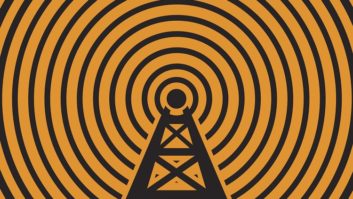Richard Wood relates an experience troubleshooting what appeared to be a problem with an FM antenna or line.
A client station had experienced a rapid increase in the standing wave reading on its tube-driven FM transmitter. Severe winter weather had been through and the problem was thought to be weather-related; so the chief engineer took an air-cooled load to the site and hooked the transmitter to it.

Fig. 1: An engineer’s favorite, Two Stroke Smoke. Lo and behold, the VSWR went to 200 and the transmitter appeared to be making full power. Out went the call for a tower crew and an antenna troubleshooter. Enter Richard.
Whenever he goes on a trouble call, he’s aware that the client is basically at the end of his or her rope and hanging onto the last knot. So he comes prepared to solve issues.
Before hooking up the network analyzer to the antenna, Richard used a spectrum analyzer to “sniff” for local carriers with a whip antenna. He identified the station’s signal on the display, then headed up the dial to measure the second through eighth harmonics. He found no signals.
The next step was from the center carrier; he increased the span to 20 MHz and noticed a spike. This was larger than the station’s signal and about 5 MHz down in frequency.
He moved forward and tested the antenna system, tuned it up, then had the tower riggers look it over. They found no issues; so Richard directed his attention back to the transmitter.
With the rig running into a dummy load and through a line section in place, Richard could see the out-of-band emissions that were occurring.
The antenna is a single-frequency device, so any off-frequency power returns as reflected power. Because the transmitter reflectometer is broadband, it does not differentiate between on- or off-carrier power; it considers it all as power and displays it. And because the dummy load also is a broadband device it will absorb whatever frequency, within reason, fed into it.
The fix for the transmitter was to tune it up while watching the spectral signals, not just the power meter. Richard also ordered up a new set of doorknob capacitors for the driver tube input circuit.
Test metering certainly can help diagnose problems; but always remember the limitations of your equipment.
****
You’ve probably seen and smelled candles and thought you’d heard of every imaginable scent. But you probably didn’t imagine Two Stroke Smoke.

Fig. 2: Whirlwind’s power monitor is suitable for monitoring older gen-sets. Gino Balossi found it and passed it along to us; he is chief engineer for Emmis Radio in St. Louis. Two Stroke Smoke smells just like burning motor oil. Flying Tiger Motorcycles of St. Louis sells the candle, which might make a good $20 Father’s Day gift.
States the website: “Super awesome custom-blended Two Stroke Smoke candle. It’s made with real live Klotz 2 stroke oil with high-octane fragrance. We have reformulated the candle and are using metal cans with an awesome new label; however, the wood wick and 16 oz. of wonderful soy wax stay the same.”
The site also sells Grime to Glory soap, a spicy/woodsy fragrance in glycerin soap.
Head over to flyingtigermoto.com for details.
****
In the March 11 Workbench, we mentioned concrete “pylons” or “pillars” sunk in the ground to protect a tower. In the construction industry, these are known as bollards.
Thanks to Al Hajny for the term, which will help readers describe them to a contractor.
****
You have many choices for remote monitoring of A/C power. San Diego engineer Marc Mann says the PL-PM1RJ by Whirlwind appears to address every facet of power. It can help you decide whether a problem is with an upstream utility, a generator or the transmitter load itself.
Its ability to view all parameters in real time over the Ethernet or the Internet is a plus. The only limitation seems to be the device is only for three-phase wye (Y) power with 120 V legs.
Type in whirlwindusa.com in your browser, then search for “PL-PM1” for information on their Power Link Power Meter. Or browse the Power Link/Electrical Distribution section of its online catalog.
Marc read about this monitor in a sound and video contractor publication but thought it might be useful to engineers as a retrofit for older gen-sets that lack active monitoring.
Contribute to Workbench. You’ll help your fellow engineers and qualify for SBE recertification credit. Send Workbench tips to [email protected]. Fax to (603) 472-4944.
Author John Bisset has spent 45 years in the broadcasting industry and is still learning. He handles West Coast sales for the Telos Alliance. He is SBE certified and is a past recipient of the SBE’s Educator of the Year Award.











